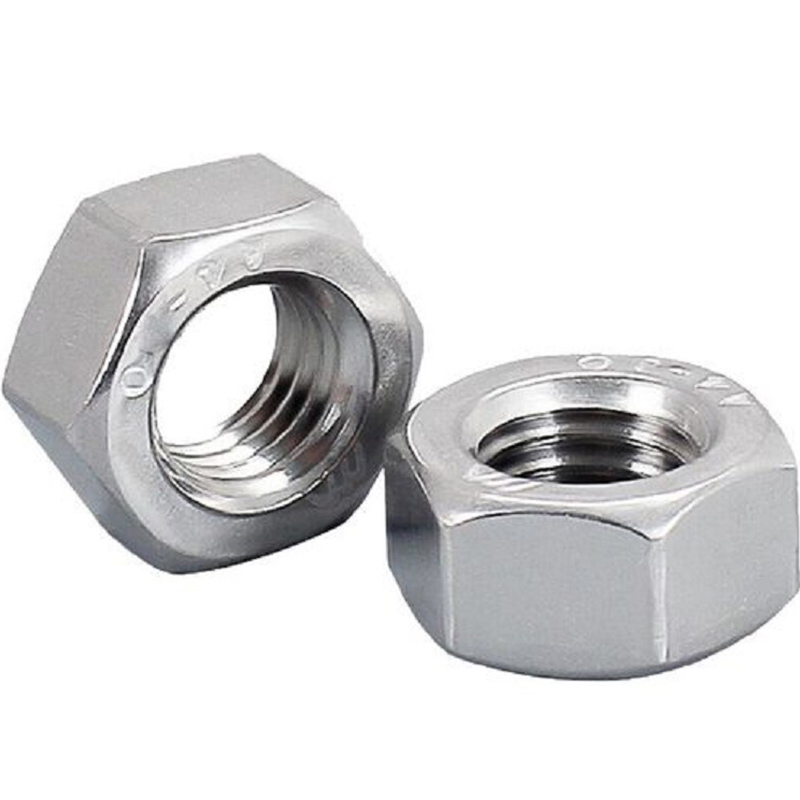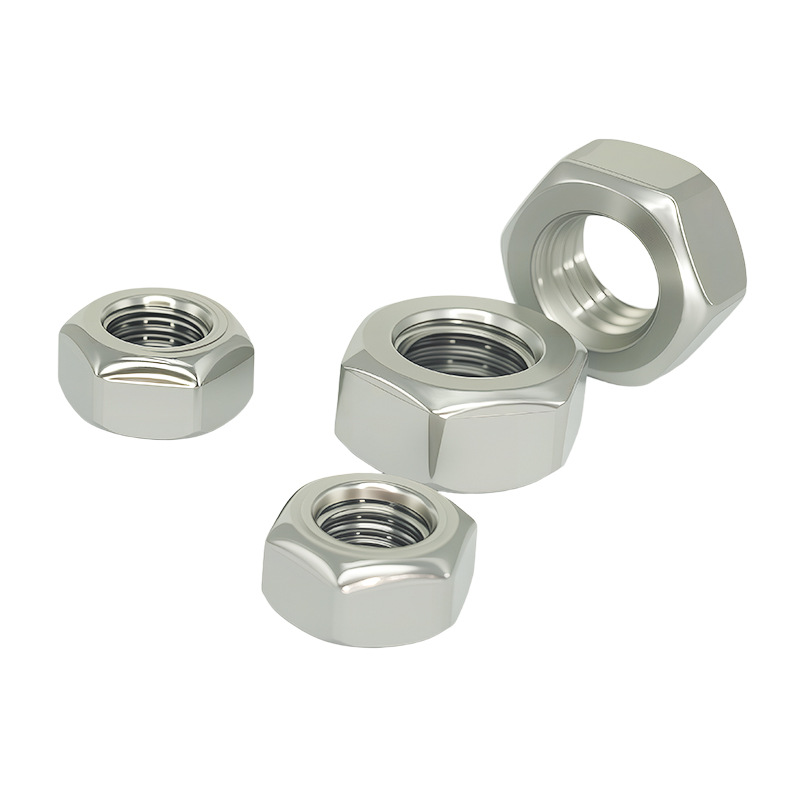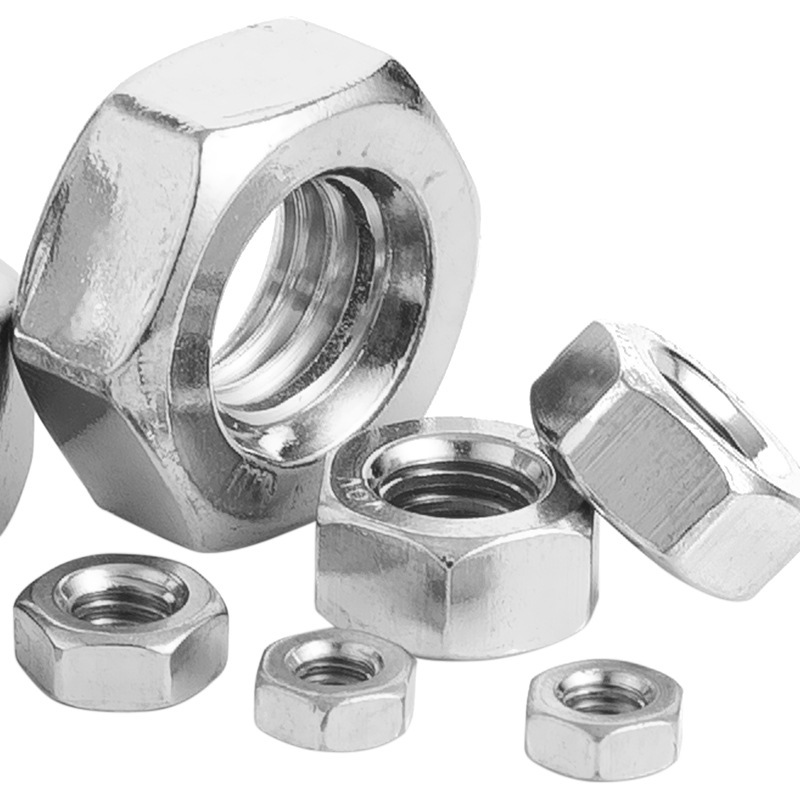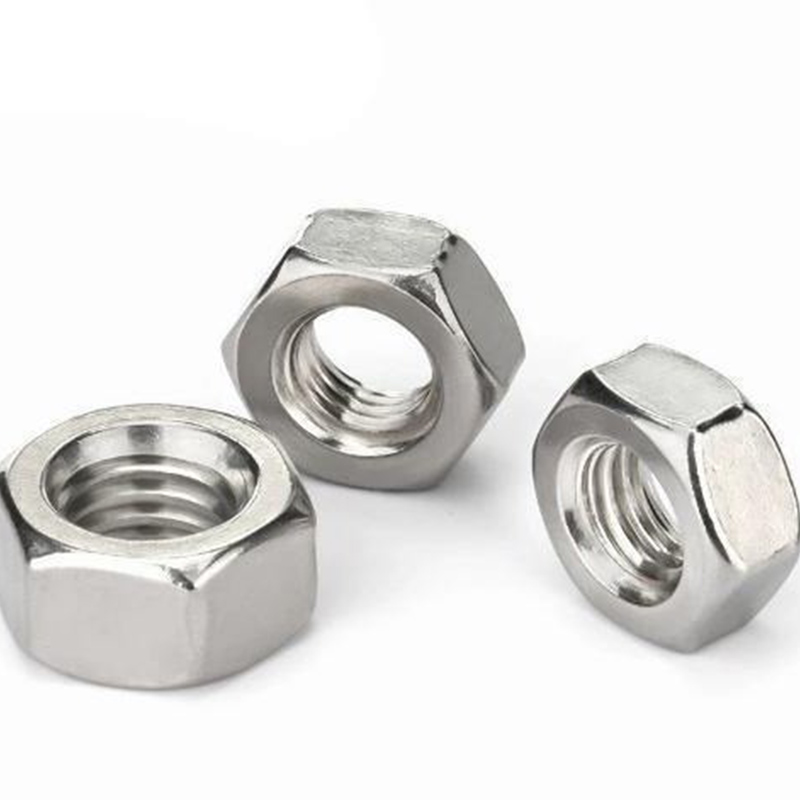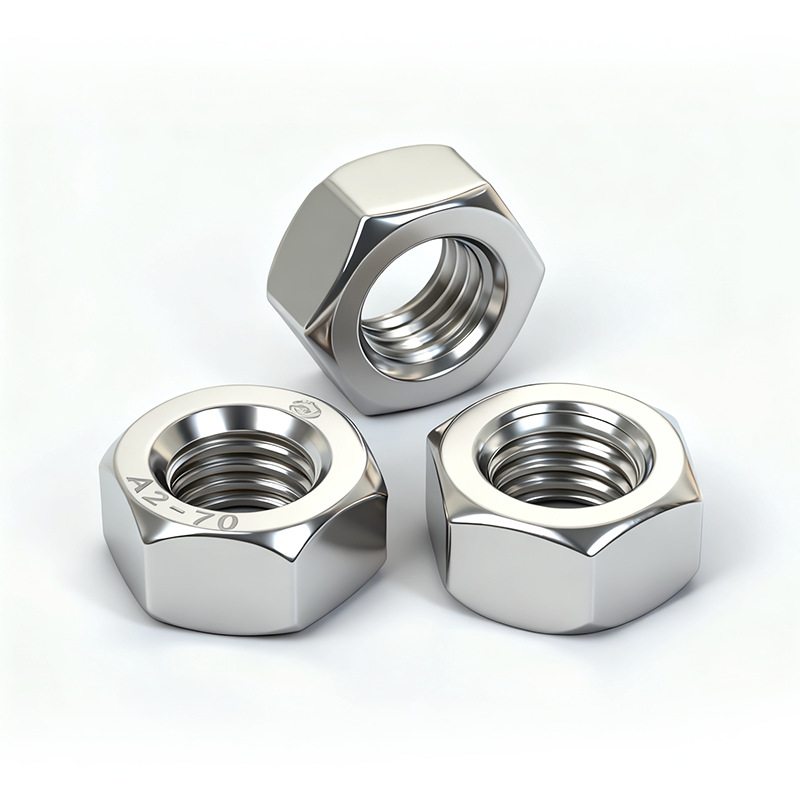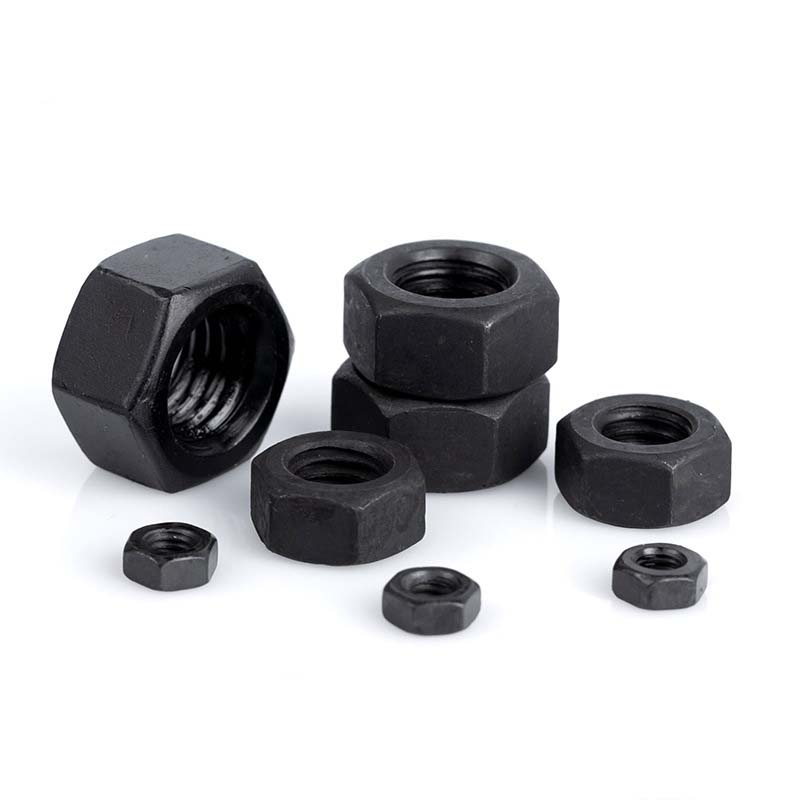Hexagon Nuts With Large Widths Across Flats
Send Inquiry
The hexagon nuts with large widths across flats often get strong surface treatments to keep them from rusting in harsh environments.
Hot-dip galvanizing (HDG) that follows ASTM A153 is common,it puts on a thick, tough zinc coating. Other options include mechanical zinc plating (usually with extra coatings), sherardizing, or inorganic zinc-rich coatings.
Dimensions and standards
These hexagon nuts with large widths across flats follow standard size specs, like ASME B18.2.2 or ISO 4032 for hex nuts.
They come with coarse (UNC) or fine (UNF) threads. Sizes usually go from 1/2" to 1-1/2" (M12 to M36), and sometimes even bigger.
Most are standard height, but heavy hex versions (ASME B18.2.2) are taller and have a bigger surface that touches the material. That makes them stronger for important structural uses.

|
Mon |
M12 | M16 | M20 | M22 | M24 | M27 | M30 | M36 |
|
P |
1.75 | 2 | 2.5 | 2.5 | 3 | 3 | 3.5 | 4 |
|
e min |
23.91 | 29.56 | 35.03 | 39.55 | 45.2 | 50.85 | 55.37 | 66.44 |
|
k max |
10 | 13 | 16 | 18 | 19 | 22 | 24 | 29 |
|
k min |
9.64 | 12.3 | 14.9 | 16.9 | 17.7 | 20.7 | 22.7 | 27.7 |
|
s max |
22 | 27 | 32 | 36 | 41 | 46 | 50 | 60 |
|
s min |
21.16 | 26.16 | 31 | 35 | 40 | 45 | 49 | 58.8 |
Achieve the specified preload
To get the right tightness as specified for these hexagon nuts with large widths across flats, you need to use torque wrenches that are calibrated or tensioning tools. Follow the instructions from the bolt/nut maker and relevant standards, like the RCSC Specification.
It’s usually important to lubricate the threads properly.
These nuts are made to handle the high stress when you tension them carefully,they won’t strip or bend. That way, the structural connection stays solid under the loads it’s designed for.







